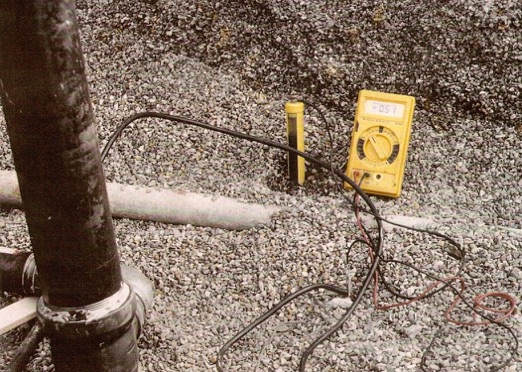The most commonly accepted measure of corrosion protection is the -0.85 volt criterion established by the National Association of Corrosion Engineers (NACE). If a structure's voltage potential is below -0.85 volts, one should assume that it will corrode if exposed to air and water. If the voltage potential is -0.85 volts or greater, one should assume that the structure is protected against corrosion. In rare cases, exceptions to this rule exist but they are beyond the scope of this discussion.
I have measured unprotected readings at many UST sites where galvanic zinc or magnesium anodes are attached to the tanks or pipes. I have also found unprotected tanks and pipes where impressed current rectifier systems were installed. An inspector does not have to figure out why the readings are high or low. All the inspector has to know is weather or not the reading meets the -0.85 volt criterion. If a reading is low, the inspector should note where the reading was taken and what he was connected to when the reading was taken. If a rectifier system is present, he should record the voltage and amperage output of the rectifier.
| Metal | Volts1 |
|---|---|
| Commercially Pure Magnesium | -1.75 |
| Magnesium Alloy (6% Al, 3% Zn, 0.15% Mn) |
-1.6 |
| Zinc | -1.6 |
| Aluminum Alloy (5% zinc) |
-1.6 |
| Commercially Pure Aluminum | -1.6 |
| Mild Steel (clean and shiny) |
-0.5 to -0.8 |
| Mild Steel (rusted) |
-0.2 to -0.5 |
| Cast iron (not graphetized) | -0.5 |
| Lead | -0.5 |
| Mild steel in concrete | -0.5 |
| Copper, brass, bronze | -0.2 |
| High silicon cast iron | -0.2 |
| Mill scale on steel | -0.2 |
| Carbon, graphite, coke | +0.3 |
1
Typical potential normally observed in neutral solls and
water, measured with respect to cooper sulfate reference
electrode.
